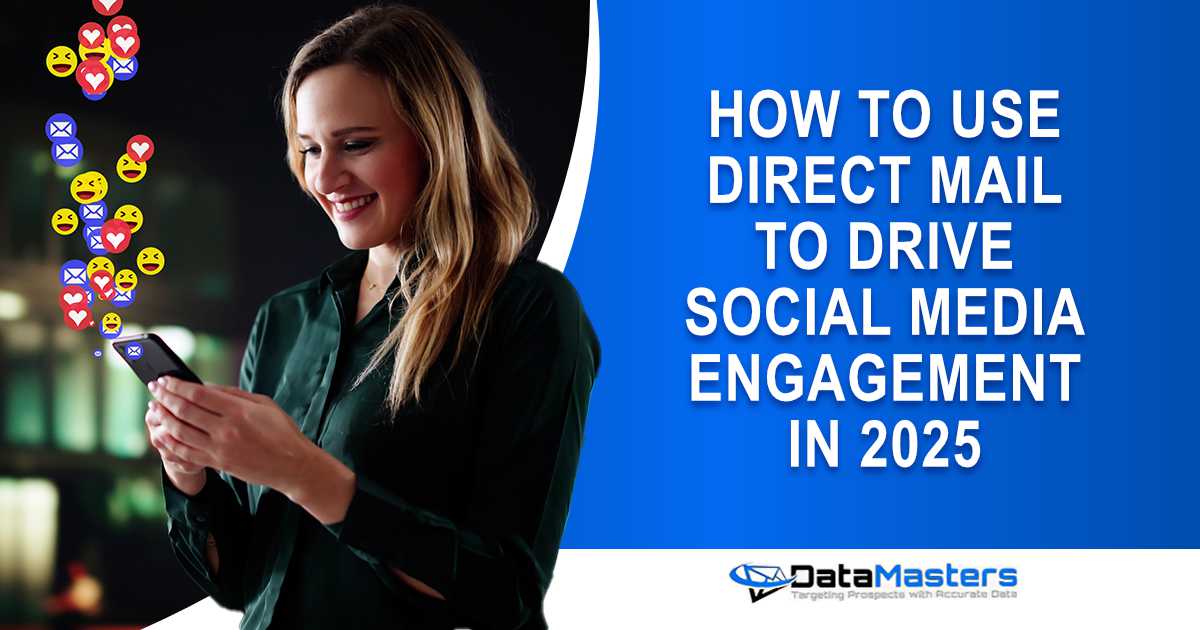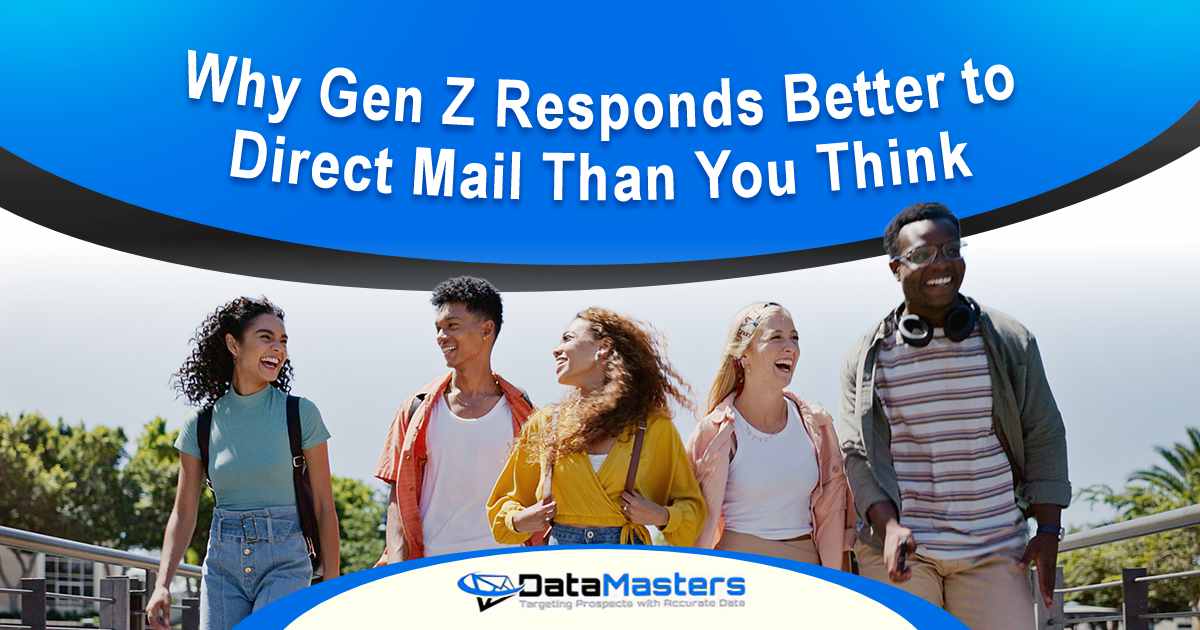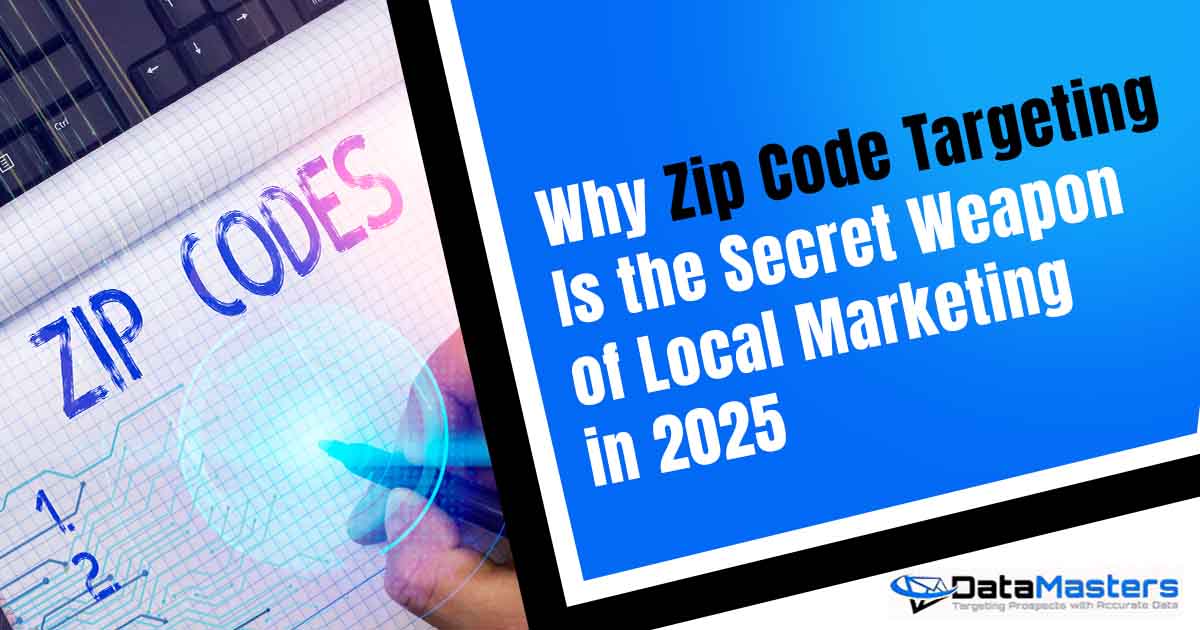Direct mail continues to be a powerful tool in marketing, even in a digital-first environment. For marketing managers, business owners, and agencies, the real value now lies in how direct mail connects with digital platforms—especially social media. By integrating physical mailers with online channels, brands can create stronger customer touchpoints, increase engagement, and drive measurable actions. In 2025, the link between direct mail and social media engagement is no longer optional; it is a strategy that builds trust and expands reach across multiple platforms.
Why Direct Mail Still Matters in the Digital Age
Direct mail offers a tangible experience that stands out in a world dominated by screens. Unlike digital ads that users may scroll past, a well-designed mailer has a physical presence and captures attention in a way digital media cannot. This makes it an ideal driver for encouraging recipients to interact with a brand online.
Businesses are finding that direct mail is not about replacing digital campaigns, but about strengthening them. When used strategically, direct mail creates a pathway for audiences to move from offline experiences to social media platforms. Whether it is scanning a QR code, redeeming a unique offer, or following a brand’s TikTok or Instagram page, the connection between offline and online campaigns delivers measurable results.
The relevance of direct mail in 2025 is backed by research. Studies show that integrating direct mail with digital strategies increases response rates significantly, with some campaigns reporting up to a 118% lift in engagement. This data underscores the role of direct mail as a catalyst for social media interaction and engagement in a multichannel marketing approach.
The Role of Direct Mail in Boosting Social Media Engagement
Direct mail is more than a tool for brand awareness; it is a driver of action. When integrated with social media, it encourages audiences to move from holding a physical piece of mail to engaging with a brand online. This shift is essential for businesses that want measurable growth from both offline and digital campaigns.
A primary strength of direct mail is its ability to capture attention in a way that digital ads often cannot. Inboxes and feeds are crowded with competing messages, but a personalized mailer feels more intentional. This difference helps brands stand out and motivates recipients to take the next step—such as visiting a social profile, scanning a QR code, or entering a campaign-specific link.
Companies across industries are leveraging direct mail to increase followers, likes, and shares. For example, a brand may send a postcard with a QR code that links directly to a TikTok challenge or Instagram campaign. Others may use personalized mail to highlight exclusive promotions available only to those who connect online. These actions not only drive traffic but also build long-term engagement across platforms.
In 2025, direct mail social media engagement is no longer about a single touchpoint. It is about creating a bridge between offline and online interactions that strengthens customer relationships. When executed effectively, direct mail becomes a direct driver of measurable social actions—turning one piece of mail into ongoing digital engagement.
Direct Mail and Social Media Integration Strategies
Direct mail and social media are most effective when they work together. By combining tactile print with digital interaction, businesses can create a seamless customer journey that leads to higher engagement and stronger results. Several strategies stand out in 2025 as effective methods for building direct mail social media engagement.
Using QR Codes to Connect Offline and Online Channels
QR codes have become a standard element in modern direct mail. Research shows that about 41% of recipients will scan a QR code on a mailer, with that number rising to 51% among people aged 18–34 Oppizi United Kingdom. This demonstrates how comfortable audiences are with transitioning from a physical piece of mail to a digital experience.
When brands use QR codes, they create a simple and measurable link to social media platforms. A scan can lead directly to an Instagram profile, a TikTok campaign, or even a branded landing page where users are encouraged to follow, share, or engage. For best results, businesses should ensure the QR code is easy to spot, mobile-friendly, and paired with a clear call to action that explains the benefit of scanning.
Creating Exclusive Social Media Offers Through Direct Mail
Another effective strategy is to provide incentives that can only be unlocked by engaging on social media. For example, a brand might send a mailer with a code that gives access to a limited-time discount, contest entry, or downloadable resource once the recipient follows or tags the company online.
These exclusive offers not only drive immediate action but also create a sense of urgency. They encourage customers to connect on social platforms and maintain ongoing engagement beyond the initial mailer.
Encouraging Follows, Shares, and User-Generated Content
Direct mail can also spark user-generated content by inviting recipients to share their experience online. A postcard might include a campaign hashtag or ask recipients to post a photo with the product for a chance to win a reward. This approach not only increases engagement but also extends reach as customers become advocates for the brand.
By prompting follows, shares, and tagged posts, businesses can turn their direct mail campaigns into a source of organic visibility on social platforms.
Benefits of Combining Direct Mail with Social Media Engagement
Integrating direct mail with social media is more than a creative tactic—it delivers measurable business results. By merging offline and online efforts, businesses gain stronger customer connections, better campaign performance, and higher returns on investment.
One of the biggest advantages is the lift in response rates. Studies show that multichannel campaigns can increase response by up to 118% PostcardMania. This is because direct mail provides a tangible reminder of the brand, while social media offers an immediate way to act. When recipients are encouraged to scan, follow, or share, they are far more likely to engage compared to single-channel outreach.
Another benefit is trust. Customers tend to view a physical mailer as more credible than a digital ad, which can feel impersonal or intrusive. When that trust is paired with interactive elements that connect to social platforms, it creates a smooth path from awareness to engagement.
Cross-channel strategies also provide clear data. QR codes, custom URLs, and social-specific promotions allow businesses to track how many recipients move from a mailer to a digital platform postal.com. This measurable feedback helps marketing managers refine future campaigns and allocate budgets more effectively.
By combining direct mail and social media engagement, businesses create a cycle where offline efforts fuel digital growth, and digital platforms reinforce brand visibility. The result is a marketing strategy that is both comprehensive and sustainable.
Best Practices for Maximizing Direct Mail Social Media Engagement
To achieve strong results, businesses need more than a mailer with a QR code. Successful campaigns require planning, alignment with digital strategies, and clear calls to action. The following best practices help maximize direct mail social media engagement.
Personalization and Targeting
Direct mail is most effective when it feels relevant to the recipient. Using customer data allows businesses to tailor messages, images, and offers to specific audience segments. A personalized postcard that references past purchases or interests is more likely to lead someone to follow or engage on social media.
Targeting also reduces waste by ensuring mailers reach those most likely to respond. For example, a campaign promoting an Instagram contest may focus on younger demographics, who are more likely to engage with visual content and social sharing.
Timing and Frequency
Direct mail should align with digital campaigns for maximum impact. Sending a mailer right before or during a social media launch creates a stronger connection between the two channels. Businesses should also consider timing around product launches, seasonal promotions, or events to keep engagement high.
Frequency matters as well. While one mailer can drive initial interest, a sequence of coordinated mail pieces can reinforce the message and remind recipients to take action. The goal is to stay top-of-mind without overwhelming the audience.
Design and Messaging Tips
The design of a mailer plays a direct role in driving social media interaction. Consistent branding between print and digital channels helps recipients recognize the brand immediately when they land online.
The messaging should be clear and action-oriented. Phrases like “Scan to follow us on Instagram” or “Share your photo with #BrandChallenge” eliminate confusion and increase participation. Placing the QR code or promotional details in a visible location ensures recipients know exactly how to engage.
Future of Direct Mail and Social Media Integration in 2025
The connection between direct mail and social media engagement will continue to evolve as technology advances and consumer behavior shifts. In 2025, businesses are already exploring new tools that make offline-to-online engagement faster, more interactive, and more personalized.
One trend is the rise of AI-driven personalization. Artificial intelligence allows companies to analyze customer behavior and create mailers that speak directly to individual interests. This not only improves response rates but also increases the likelihood that recipients will engage with a brand’s social platforms.
Another innovation is the use of immersive technologies. Augmented reality (AR) and near-field communication (NFC) chips are being integrated into direct mail campaigns, allowing recipients to unlock interactive experiences with a smartphone. These tools can drive engagement on platforms like TikTok or Instagram by blending physical and digital storytelling.
The future also points toward deeper cross-channel analytics. As more campaigns combine direct mail with digital, businesses will rely on data to track engagement across multiple platforms. This makes it easier to see how a postcard or brochure contributes to measurable actions such as new followers, video views, or shared content.
The growth of these trends highlights that direct mail is not being replaced by digital marketing—it is being reinvented as a key driver of social media engagement. For marketing managers and business owners, the opportunity lies in adopting these innovations early and using them to create stronger, multichannel connections.
Grow Your Business with Smarter Marketing Campaigns
Take your marketing further by combining direct mail with social media engagement strategies that deliver measurable results. DataMasters provides the most effective mailing lists and campaign solutions to help businesses connect offline and online.
Call today at (469) 549-1800 or toll-free at (800) 897-1183 to start building campaigns that drive engagement across every channel.





